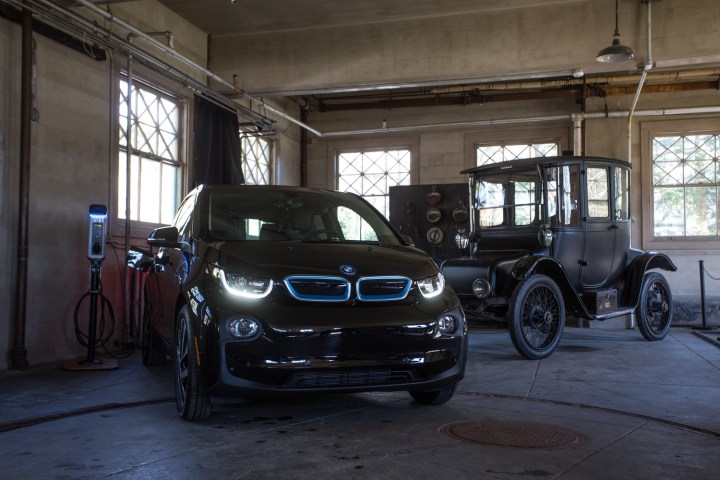
The German automaker and electric-car promoter is teaming with the National Park Service, National Park Foundation, and the Department of Energy to install up to 100 charging stations in U.S. National Parks. Several National Parks already have their own charging stations, but the park system is far from having a comprehensive network. Adding 100 stations should help make visiting the National Parks more convenient for electric car drivers.
The first new station was switched on today at Thomas Edison National Historical Park in West Orange, New Jersey, the site of Edison’s home and laboratory. The home of a man indelibly associated with electricity probably isn’t a bad place to start a project like this. Edison built his own charging station in 1904, when electric cars were actually quite popular. BMW will sponsor the cost of all electric cars and plug-in hybrids charging at this station for the next six months.
From there, BMW and the other partners will evaluate other possible locations for new charging stations. BMW says its team will consider factors like proximity to and strength of electric-car markets, distance from nearby charging sites, and “natural and cultural landscape considerations.” Dozens of parks have already expressed interest, according to BMW.
The charging stations will be open to the public, but a major benefit for BMW will be added convenience for owners of its i3. The diminutive i3 got a range boost for 2017, going from 81 miles to 114 miles. But BMW’s decision to design and market the i3 as an urban runabout is looking less wise in the face of new affordable long-range electric cars, like the 238-mile Chevrolet Bolt EV, and the upcoming Tesla Model 3, which will have a 215-mile range.
Nonetheless, BMW expects to sell 100,000 electric cars and plug-in hybrids this year. That’s the same quantity it sold in the previous three years combined. Most of those sales will probably be plug-in hybrids, which BMW now has quite a few of in its lineup.


